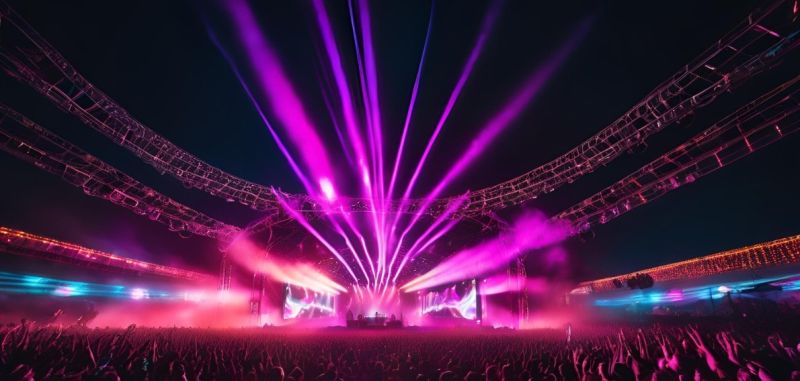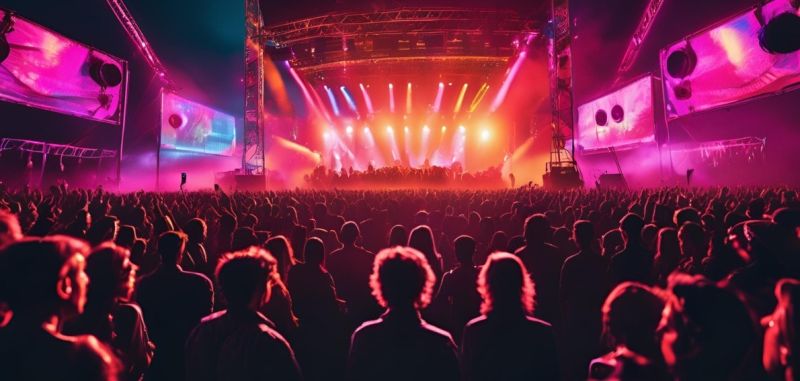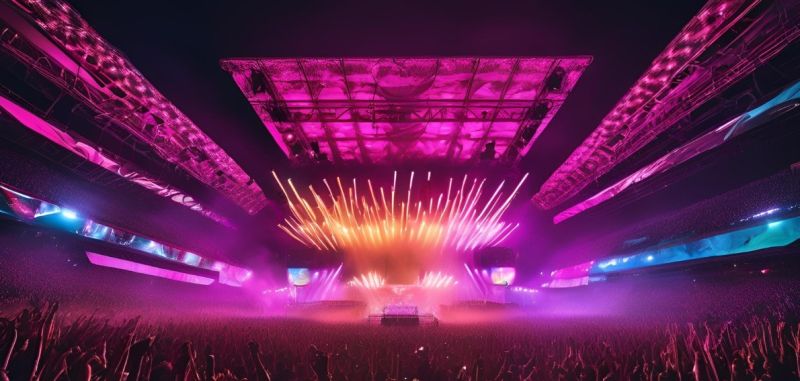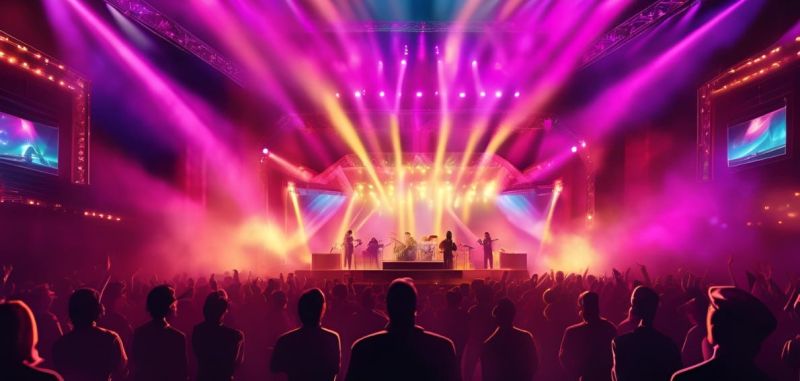In recent decades, the electronic music industry has evolved from an underground subculture to a dominant global force in the music industry. From intimate basement parties to sold-out festivals in massive arenas, electronic dance music (EDM) has gained immense popularity worldwide. The globalization of electronic music is not just a reflection of its growing audience but also a testament to how diverse cultures, technology, and social platforms are shaping its development.
The Rise of EDM and Its Worldwide Appeal

Electronic music, once confined to underground clubs and rave scenes, has become a genre that transcends geographical and cultural boundaries. In the early days, the sounds of electronic music emerged from cities like Detroit, Chicago, and Berlin, where techno, house, and trance were born. EDM artists have been instrumental in shaping the genre’s evolution through their live performances and music production. However, in the 21st century, electronic music has found its way into mainstream culture, topping music charts, filling stadiums, and dominating the airwaves.
The genre’s rapid expansion can be attributed to the rise of digital technology, streaming platforms, and social media, which have made music more accessible to a global audience. Prominent electronic artists have played a crucial role in driving the genre’s popularity and innovation across different regions. Thanks to platforms like YouTube, Spotify, and SoundCloud, artists can now share their tracks with millions of listeners across the globe, effectively breaking down geographical limitations.
The Role of Social Media in the Global Spread of Electronic Music

Social media and digital platforms have played an essential role in the global spread of electronic music. Platforms like Instagram, TikTok, and Twitter have allowed artists to directly engage with their fans, build a community, and promote their music internationally. The viral nature of social media means that music videos, live streams, and DJ performances can quickly reach audiences across different countries and continents.
Social media has also made it possible for music festivals to gain global recognition. Large-scale events like Tomorrowland in Belgium, Ultra Music Festival in Miami, and Electric Daisy Carnival (EDC) in Las Vegas are now household names, attracting audiences from all over the world. The accessibility of these events through live-streaming and virtual experiences has further contributed to the international appeal of electronic music. Social media platforms have also transformed how live events are organized and experienced, allowing fans to engage with their favorite artists in real-time.
Cultural Influences and the Fusion of Global Sounds

One of the most exciting aspects of electronic music’s globalization is how it has embraced and integrated influences from various cultures. Artists are not confined to a specific regional sound but are constantly experimenting with diverse musical styles, incorporating elements of traditional music from countries across the world. For example, the influence of Latin rhythms in house music, African beats in techno, and Asian sounds in trance have given rise to a more eclectic and diverse range of sub-genres.
The globalization of electronic music has led to an explosion of hybrid genres, blending elements from different cultural traditions. Platforms like Sesh have facilitated collaborative music creation among producers, leading to innovative sound fusions and enhanced creativity. Artists like Diplo, Major Lazer, and Black Coffee have been instrumental in incorporating global influences into their music, making it more accessible and relevant to different cultural contexts.
Electronic Music Festivals as Global Cultural Phenomena

Electronic music festivals have become cultural landmarks, attracting tens of thousands of fans from all over the world. These festivals are not just about the music; they are about the experience, the sense of community, and the celebration of creativity. The electronic music industry has greatly benefited from the success of these festivals, which have become key drivers of the genre’s global expansion. The massive success of these events has further solidified the global reach of electronic music, as they create a shared cultural space where fans from different countries, backgrounds, and languages can come together to enjoy the music.
Festivals like Tomorrowland in Belgium, Sunburn in India, and Creamfields in the UK bring together diverse audiences who share a passion for electronic music. These festivals also serve as important platforms for emerging artists to showcase their talent on the world stage, helping to diversify the scene and encourage cross-cultural collaborations.
EDM Market and Trends

The electronic dance music (EDM) market is on a continuous growth trajectory, fueled by the ever-increasing demand for electrifying dance music events and festivals. This surge is particularly driven by the younger generation’s passion for electronic music, coupled with the widespread consumption of EDM content on digital platforms like streaming services and social media.
One of the most exciting trends in the EDM market is the rise of hybrid events. These innovative gatherings blend live performances with virtual reality experiences, creating immersive environments that captivate audiences both physically and digitally. Major festivals are increasingly incorporating virtual reality elements into their lineups, offering fans a unique way to experience the music and the event from anywhere in the world.
Technological advancements in music production are also playing a pivotal role in shaping the EDM landscape. The evolution of electronic music production software and hardware has made it easier than ever for artists to produce high-quality tracks. Tools like Ableton Live, FL Studio, and Logic Pro X are becoming more sophisticated, enabling producers to push the boundaries of creativity and sound design. As these technologies continue to develop, we can expect even more groundbreaking innovations in electronic music production.
Another significant trend is the fusion of hip hop and electronic dance music. This genre-blending phenomenon is gaining traction, with more artists incorporating hip hop elements into their EDM tracks. This fusion not only broadens the appeal of electronic music but also introduces fresh, dynamic sounds that resonate with diverse audiences. The synergy between hip hop’s rhythmic beats and EDM’s pulsating energy is creating a new wave of music that is both innovative and captivating.
In summary, the EDM market is thriving, driven by technological advancements, the rise of hybrid events, and the fusion of genres. As the demand for electronic dance music continues to grow, the industry is poised for even more exciting developments, making it an exhilarating time for music lovers and creators alike.
How Audiences Are Shaping the Future of Electronic Music

The global audience plays a pivotal role in shaping the future of electronic music. As electronic music continues to evolve, fans’ tastes and preferences influence the direction of the industry. Audiences are increasingly seeking authenticity and diversity in the music they consume. They want to experience new sounds, fresh collaborations, and innovative performances that push the boundaries of what electronic music can be. This demand for innovation is also evident in live events, where audiences seek unique and immersive experiences.
Additionally, the rise of “global-local” dynamics has influenced the type of music that gains popularity. Local sounds are often fused with global electronic music trends, resulting in new hybrid styles that reflect both local traditions and international influences. For example, Brazilian baile funk, Indian Bollywood beats, or Japanese city pop are being incorporated into electronic music, resulting in the emergence of fresh sub-genres that resonate with diverse audiences.
Technology and the Democratization of Music Production

Technology has democratized music production, allowing aspiring artists from even the most remote corners of the world to create professional-quality tracks. The accessibility of digital audio workstations (DAWs) like Ableton Live, FL Studio, and Logic Pro X, combined with affordable software and hardware, has leveled the playing field, enabling anyone with a computer and a passion for music to start producing their own tracks. These tools have revolutionized music creation, enabling artists to collaborate and innovate like never before.
This democratization of music production has led to a more diverse range of voices within the electronic music scene. Aspiring producers from countries such as South Korea, Nigeria, and Argentina can now share their music with global audiences, contributing to the genre’s growing diversity. The global exchange of ideas, sounds, and techniques is leading to a more dynamic and ever-evolving electronic music landscape.
The Impact of Globalization on the Electronic Music Industry

The globalization of electronic music has also had a significant impact on the business side of the industry. With electronic music being embraced worldwide, brands, promoters, and record labels have recognized the genre’s commercial potential. Prominent electronic artists have been at the forefront of this commercial success, driving engagement and innovation within the industry. This has led to an explosion of sponsorships, brand partnerships, and collaborations with mainstream artists across genres. Additionally, electronic music has found a place in various media, including movies, video games, and advertising, expanding its cultural footprint even further.
As global demand for electronic music continues to grow, artists are finding new revenue streams, including live performances, merchandise sales, and digital content creation. The global nature of the music industry also allows artists to tour internationally, reaching new audiences and expanding their fan base.
The Ever-Evolving Global Dancefloor

The globalization of electronic music is a testament to the genre’s ability to adapt, innovate, and connect people from all walks of life. The fusion of cultures, the rise of technology, and the influence of a global audience have transformed electronic music into a vibrant and dynamic force that shows no signs of slowing down. As electronic music continues to evolve and shape the cultural landscape, it will undoubtedly remain a global phenomenon that brings people together to celebrate the universal language of sound.
Whether you’re raving in Ibiza, vibing in Tokyo, or dancing in a remote corner of the world, electronic music is the soundtrack of our interconnected world, constantly evolving and breaking down barriers, one beat at a time.
You May Also Like:
Gen Z and Electronic Music: How the New Generation is Shaping the Future of Dance Events
Attendee Management for Concert Venues in 2025: Navigating the Future of Live Events



 10th April 2025
10th April 2025